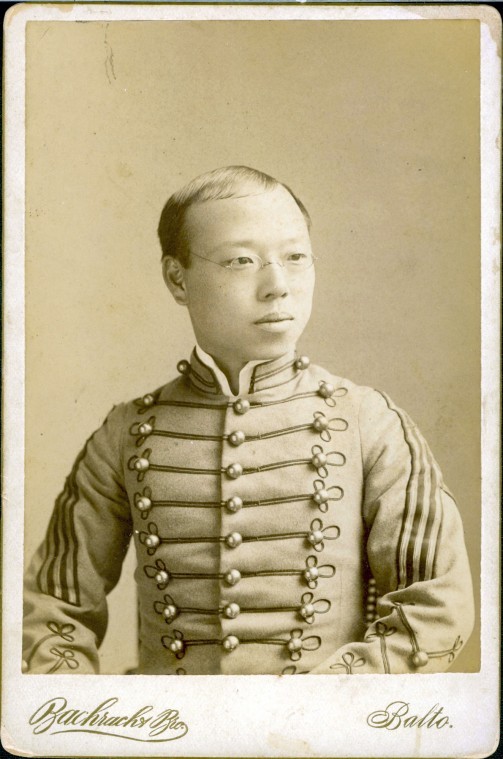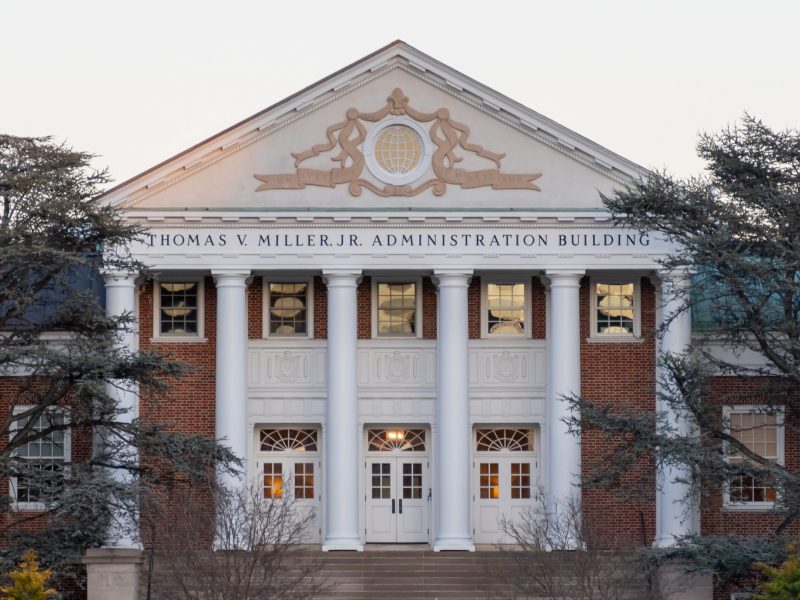
Pyon Su became the first person from Korea to graduate from an American university or college when he received his diploma from this university in 1891.
CORRECTION: Due to a reporting error, this story incorrectly stated the name of Pyon Su’s descendant, Harold Pyon. This article has since been changed to reflect this correction.
With the sound of professor F. Eibner’s orchestra still ringing in the chapel, Pyon Su delivered one of the class of 1891’s six graduation exercises — a speech on commerce — and graduated.
Pyon Su, one of just fewer than 50 students at the Maryland Agricultural College at the time, was a distinguished scholar in this area and the first person from Korea to graduate from any American university or college. But in his home country, said his descendant, Harold Pyon, he was a “revolutionary of change.”
On Friday morning, Harold Pyon presented Pyon Su’s fragile, 121-year-old diploma, now the oldest in University Archives’ collection, to Vice President of Student Affairs Linda Clement.
Harold Pyon, wearing white gloves to protect the artifact, reflected on his ancestor and the 1891 graduate’s journey from holding a government post in Seoul to becoming one of the earliest academics in College Park.
Pyon Su arrived in the United States as a member of the first Korean embassy in 1883, during a period of turmoil for his country. He traveled back with the delegation to Seoul in 1884, but officials rejected his affiliations with an opposing group, the “Progressive party,” The Washington Post reported in 1891. When the Korean government seized his estates and denied him re-entry, Pyon Su decided to take up residence back in the U.S.
Though he was the lone member of the embassy to stay back, Pyon Su soon found a community in this area by joining the Maryland Agricultural College, a school of 46 students, to pursue his interest in agriculture.
He befriended Richard Calvert, the grandson of the college’s primary founder, Charles Benedict Calvert, and gained a mentor in Daniel Ammen, a U.S. Navy rear admiral and close friend of President Ulysses S. Grant.
Although he wasn’t a citizen of this country, he earned a position with the U.S. Department of Agriculture after graduation and prepared a report on Japanese culture, which was so well-received that he earned an opportunity to study Chinese agriculture.
But Pyon Su’s life was cut short at 32 — he was struck and killed by a train in the city, just four months after leaving the university, according to university archivist Anne Turkos.
His obituary in The Post read, “He was an enthusiast on the subject of agriculture, and found much in this country that was instructive. … He was a careful student and a good linguist.”
However, because the Korean government viewed Pyon Su as a traitor, the country denied his body, Harold Pyon said.
“It was Korean rule that if you committed treason or something, you were not accepted,” he said. “You were denied existence.”
Today, however, many Koreans view Pyon Su as a celebrity and often make pilgrimages to his grave in St. Joseph’s Cemetery in Beltsville, Turkos said.
“They are coming here to pay our tribute,” Harold Pyon said. “It’s a tradition to respect our elderly.”
When a Korean film crew set out to make a documentary on Pyon Su’s life, Harold Pyon and others began reaching out to the family members of those involved in his funeral to track down Pyon Su’s possessions. Eventually, a grandson of Richard Calvert, one of the pallbearers, met with Harold Pyon in the Su Pyon Room at the University of Maryland, and gave Pyon the diploma. Charles Calvert found the diploma rolled up in a drawer in perfect condition.
Although the crew considered donating the diploma to a Korean museum, Harold Pyon said, they ultimately decided this university would be the best place to preserve it.
“I hope this diploma will be a great asset to the University of Maryland and also to the Korean-Americans and Korea,” Harold Pyon said. “It’s an exciting moment for my family and the university. I’m so extremely proud and honored that my family was a part of history, not only of Korean but also the University of Maryland.”
A high-resolution scan of the diploma will be mounted in Stamp Student Union’s Pyon Su Room near the colored painting of Pyon Su that currently hangs there, Turkos said. The original diploma will be preserved under the highest security in the archives, she added, and will be digitized and available to view online.
“It’s a really great thing to show to classes that are coming in,” said Amanda Hawk, a library sciences and history graduate student who works with Turkos. “It shows the kinds of things that we collect in the archives, the significance of connections between different countries. It’s just exciting to see a snapshot of our university history that most people wouldn’t know about.”



